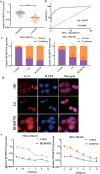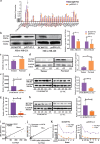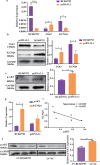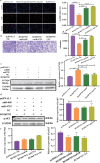LncRNA-BC069792 suppresses tumor progression by targeting KCNQ4 in breast cancer
- PMID: 36859185
- PMCID: PMC9976483
- DOI: 10.1186/s12943-023-01747-5
LncRNA-BC069792 suppresses tumor progression by targeting KCNQ4 in breast cancer
Abstract
Background: Breast cancer is the most common malignant tumor that threatens women's health. Attention has been paid on the study of long- non-coding RNA (lncRNA) in breast cancer. However, the specific mechanism remains not clear.
Methods: In this study, we explored the role of lncRNA BC069792 in breast cancer. In vitro and in vivo functional experiments were carried out in cell culture and mouse models. High-throughput next-generation sequencing technology and real-time fluorescence quantitative PCR technology were used to evaluate differentially expressed genes and mRNA expression, Western blot and immunohistochemical staining were used to detect protein expression. RNA immunoprecipitation assay and dual-luciferase activity assay were used to evaluate the competing endogenous RNAs (ceRNA), and rescue and mutation experiments were used for verification.
Results: We found that lncRNA BC069792 was expressed at a low level in breast cancer tissues, and significantly decreased in breast cancer with high pathological grade, lymph node metastasis and high Ki-67 index groups. Moreover, BC069792 inhibited the proliferation, invasion and metastasis of breast cancer cells in vitro and in vivo. Mechanically, BC069792 acts as a molecular sponge to adsorb hsa-miR-658 and hsa-miR-4739, to up-regulate the protein expression of Potassium Voltage-Gated Channel Q4 (KCNQ4), inhibits the activities of JAK2 and p-AKT, and plays a role in inhibiting breast cancer growth.
Conclusions: LncRNA BC069792 plays the role of tumor suppressor gene in breast cancer and is a new diagnostic index and therapeutic target in breast cancer.
Keywords: Breast cancer; IncRNA BC069792; Invasion and metastasis; KCNQ4; Proliferation.
© 2023. The Author(s).
Conflict of interest statement
The authors declare no competing interests.
Figures








References
Publication types
MeSH terms
Substances
LinkOut - more resources
Full Text Sources
Medical
Miscellaneous

